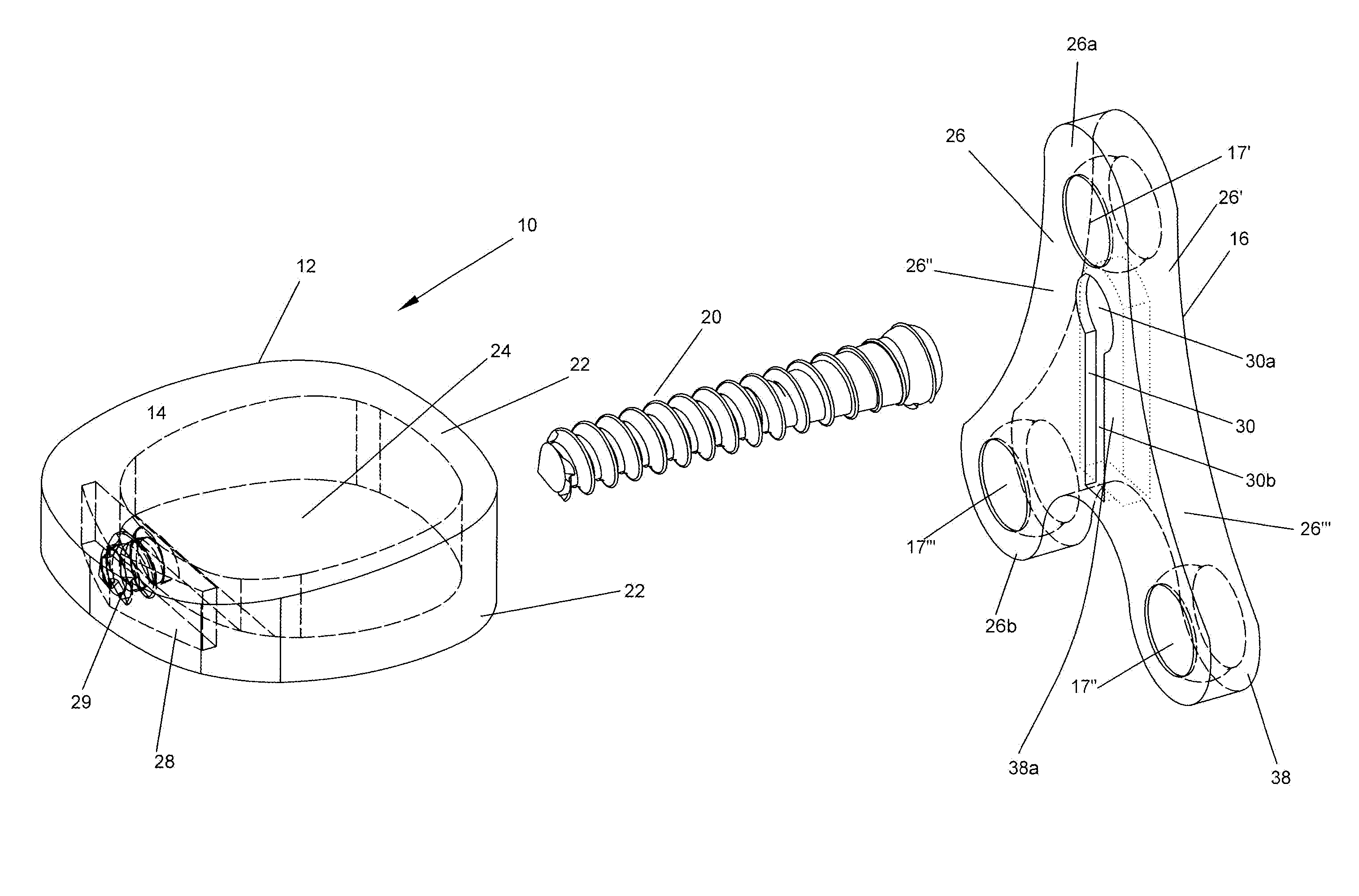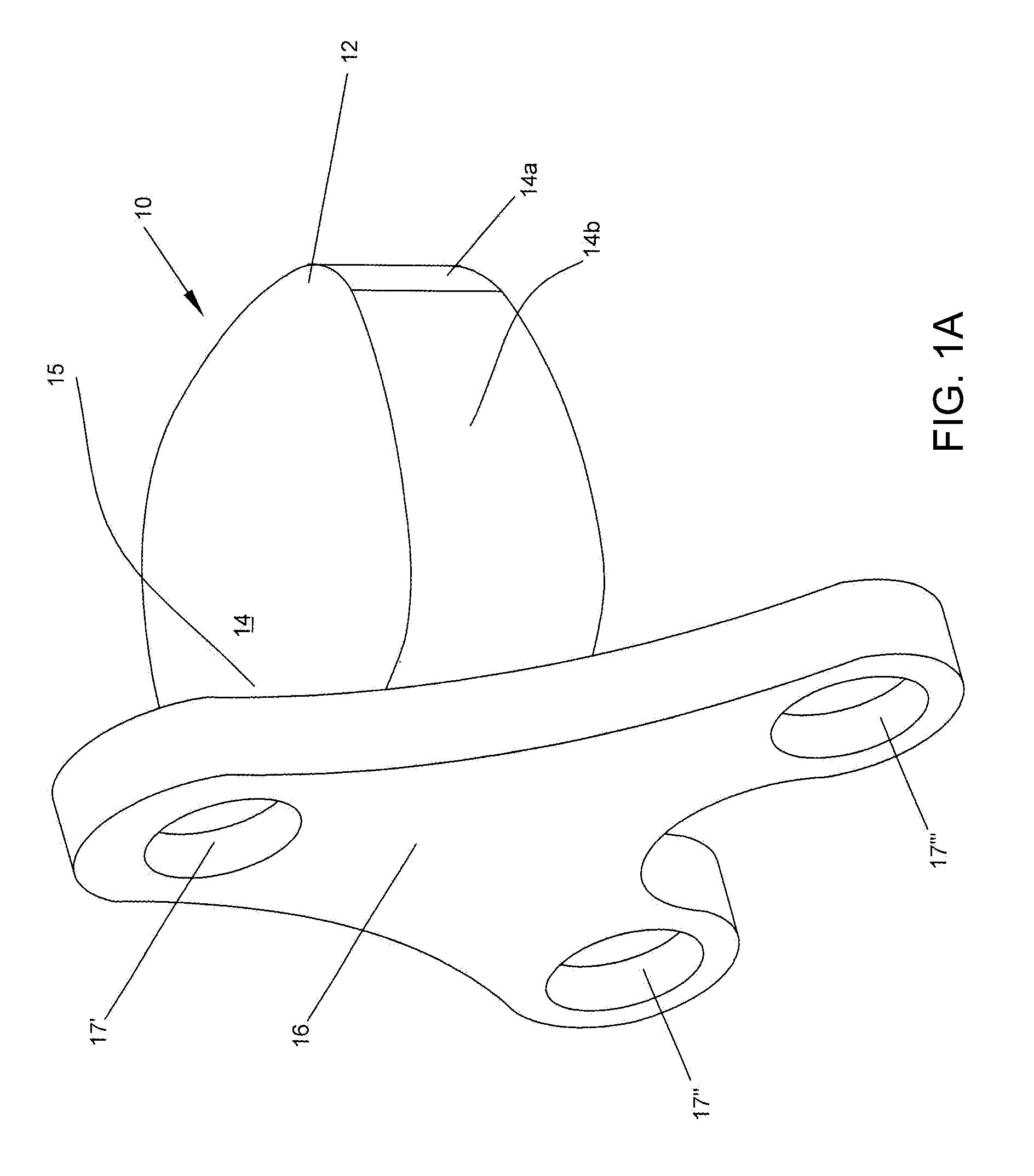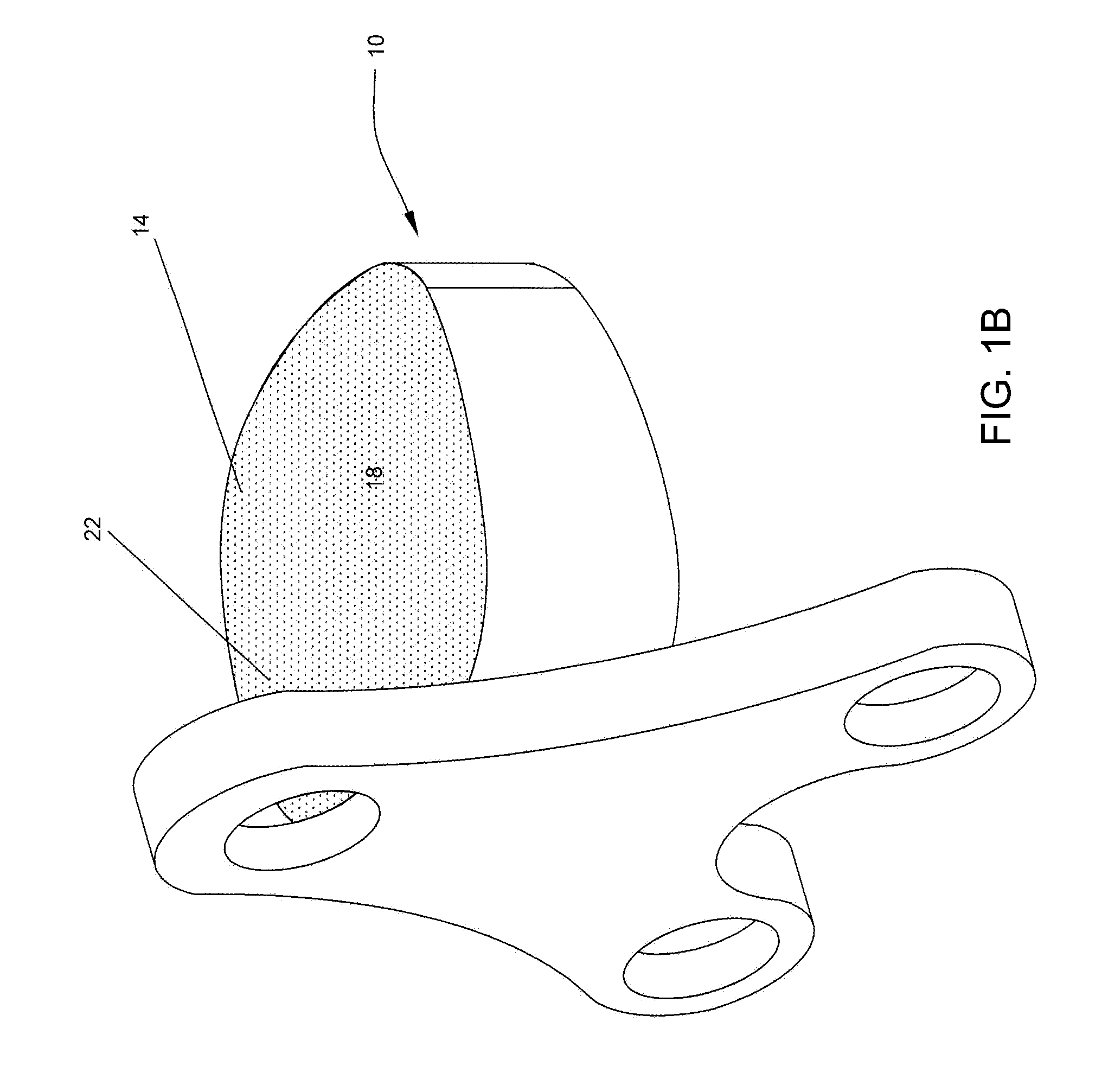Enhanced artificial disk
a technology enhanced discs, applied in the field can solve the problems of affecting the function of the disk, affecting the patient's function, and affecting the patient's pain and/or dysfunction, so as to facilitate the insertion of enhanced artificial disks, facilitate the maintenance of optimal disk height, and improve patient functional activities
- Summary
- Abstract
- Description
- Claims
- Application Information
AI Technical Summary
Benefits of technology
Problems solved by technology
Method used
Image
Examples
Embodiment Construction
[0025]FIG. 1A depicts a pre-assembled enhanced artificial disk 10 in accordance with an embodiment of the invention. As used herein, the term “enhanced” artificial disk is intended to include an artificial disk that is capable of approximating the range of motion of a normal disk while providing the cushioning effect of a normal disk. The enhanced artificial disk is also capable of adjusting the desired intradiskal pressure inside the disk.
[0026]Also, as used herein, the words “comprise,”“have,”“include,” and all grammatical variations thereof are each intended to have an open, non-limiting meaning that does not exclude additional elements or steps.
[0027]The enhanced artificial disk 10 may include a disk 12 and a stabilizer 16. The stabilizer 16 can be mounted to a first end 15 of the disk 12. The stabilizer 16 can include a plurality of holes 17′, 17″, 17′″. The disk 12 may include a cushion 14. An exemplary disk has been described in U.S. Pat. No. 8,480,742, the contents of which ...
PUM
| Property | Measurement | Unit |
|---|---|---|
| angle | aaaaa | aaaaa |
| width | aaaaa | aaaaa |
| permeable | aaaaa | aaaaa |
Abstract
Description
Claims
Application Information
 Login to View More
Login to View More - R&D
- Intellectual Property
- Life Sciences
- Materials
- Tech Scout
- Unparalleled Data Quality
- Higher Quality Content
- 60% Fewer Hallucinations
Browse by: Latest US Patents, China's latest patents, Technical Efficacy Thesaurus, Application Domain, Technology Topic, Popular Technical Reports.
© 2025 PatSnap. All rights reserved.Legal|Privacy policy|Modern Slavery Act Transparency Statement|Sitemap|About US| Contact US: help@patsnap.com



